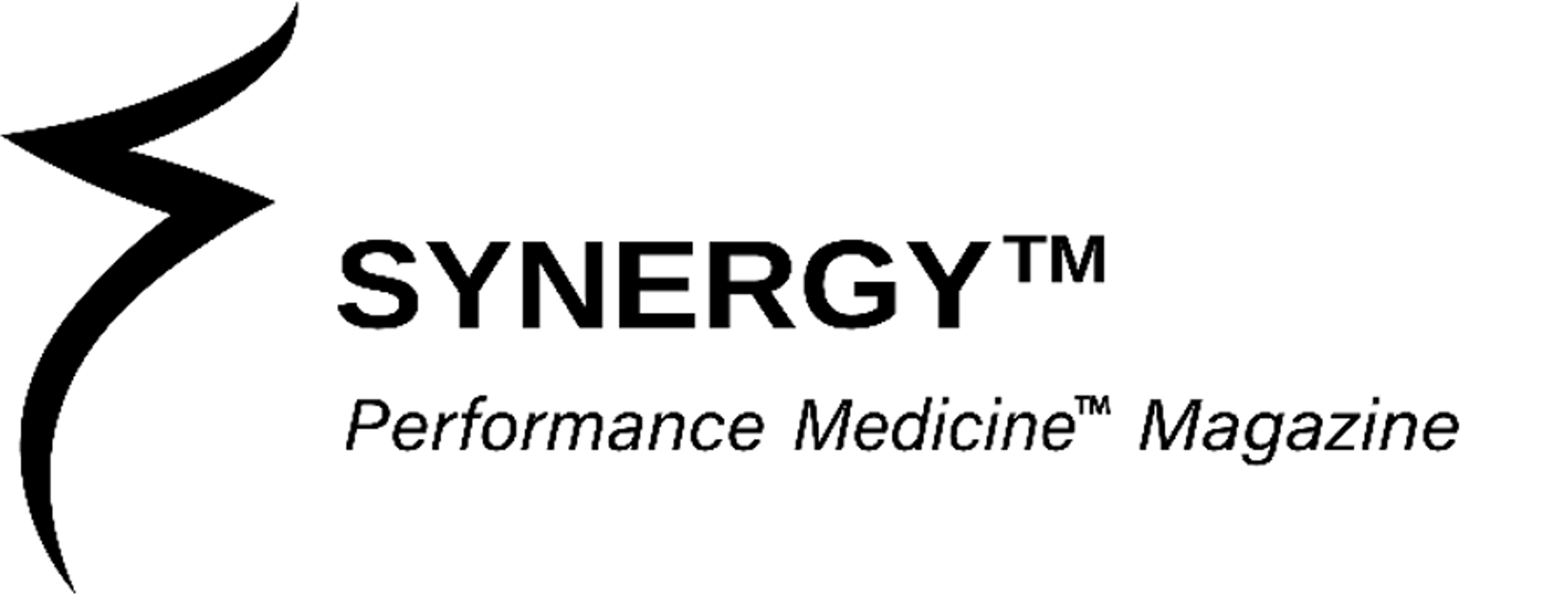Genetic Propensities | Athletic Performance

There is strong correlational evidence that genetics play an important role in athletic performance. Correlation means two things have a demonstrated tendency to express together. Elite athletes tend to have certain genetics, however, having genetics similar to elite athletes does not guarantee elite performance. Some elite athletes possess genetics that are not indicators of elite performance. Several factors can contribute to these seemingly disparate occurrences such as genetics, epigenetics, and environmental factors.
Athletic propensities are generally expressed through a combination of SNPs rather than a single relevant SNP. Epigenetics provides the ability to change genetic expression through environment and lifestyle. The alteration of specific genes occurs through nutrigenomics, which is the strategic use of nutrition and supplementation to change epigenetic expression.
Genetics is about propensities and probabilities – not absolutes. Possessing ideal genes for elite performance will not make you an elite athlete; not having optimal performance genetics does not make it out of reach. This translation guide is not designed to provide direct-to-consumer guidance; it should be used as a way to open a discussion with your provider who understands the art and science of genetics, epigenetics, and the interactive component of using the personal genetic blueprint to guide success in alignment with your specific goals.
V02 Max

WHAT THIS MEANS
VO2 max is the maximum amount of oxygen a person can use during intense exercise. There are three different categories of VO2 Max: cardiovascular, metabolic, and muscle. Most genetic analyses are correlation-based studies and compare athletes with elite performance capabilities to non-elite athletes. VO2 max is a common measure of athletic performance and can be used to guide training programs for optimal outcomes. Elite endurance athletes consider optimal VO2 max an essential area to optimize.
WHY THIS MATTERS
There is a strong genetic component to VO2 max; genetics can predict 25-50% of the differences between individuals. VO2 max takes into account cardiac stroke volume, heart rate, vascular tone, muscle fiber type, and metabolic machinery of the cell. This report breaks down individual pieces of the system that contribute to VO2 max and the specific gene variants that contribute to the components. This helps to bio-individualize recommendations for improvement.
Cardiovascular V02 Max
WHAT THIS MEANS
The first component of VO2 max is cardiovascular function. The genetics of cardiovascular function affect the heart rate, heart rhythm, blood flow, nervous system response, and blood capillary size.
WHY THIS MATTERS
Genetics that improve cardiovascular VO2 max enhances the function of the above processes. Better processes typically correspond with stronger athletic performance from training.
Metabolic and Muscular V02 Max
WHAT THIS MEANS
Metabolic and muscular components of VO2 max are grouped in this section because there is a crossover in the genes involved with each. VO2 max is the body’s ability to uptake oxygen, deliver it efficiently to the cells, transport it effectively into the muscle, and then rely on the muscles to use it in an optimized fashion.
Metabolic VO2 Max: How oxygen is used by mitochondria to create energy.
Muscle VO2 Max: How oxygen is used in the muscles to generate force.
WHY THIS MATTERS
Oxygen is a key component for converting macronutrients into energy. Without an adequate and efficient supply of oxygen, the conversion of nutrients into usable energy can be compromised.
Metabolic/Muscle VO2 Max: If beneficial, they can contribute to VO2 potential trainability.
Metabolic Efficiency

The foremost nutrition limiter to endurance sports performance is depleted glycogen stores. Reliance by many athletes on carbohydrate [CHO] as their primary fuel source remains pervasive and indefensible because it sabotages one’s health and potential. Endurance athletes erroneously fixate on replenishing the limited supply of CHO [1,200 calories] in the tank while transporting nearly unlimited fuel stored as endogenous fat [80,000 calories].
The body shifts its primary fuel source from fat to carbohydrates as intensity levels increase. This shift is an ineffective route to optimal health and sports performance. The typical diet induces nutritional stress. Ingest commercial sports drinks composed of simple sugars [sucrose or fructose] or maltodextrin and you get both quick energy and an unhealthy cycle of blood sugar spikes and crashes. Insulin-stimulating carbohydrate represents an insidious path to the podium of self-destruction.
The concept of metabolic efficiency [ME] utilizes endogenous fat to fuel the mitochondria versus the unsustainable fuel/crash syndrome of repetitive CHO feedings.
Preservation of glycogen until it is needed ought to be the maxim. Insulin sensitivity is paramount to this process and it is attainable only via metabolic efficiency. Fat adaptation is paramount…
ME is the catalyst for optimal health and performance. Its profound impact on mitigating health markers while maximizing sports performance is unparalleled. It is an inside-out approach to disease prevention and sports performance. ME manifests sports performance excellence because of your diet and exercise regimens — not despite them. A by-product of metabolic efficiency is its innumerable benefits respective to health markers.
Teaching your body to oxidize fat as its primary fuel source [fat adaptation] changes the scope of longevity and performance.
Muscle Fatigability

WHAT THIS MEANS
Muscle fatiguability is the amount of inflammation generated in muscle. During intense exercise and over the course of training, a muscle’s ability to generate forces decreases as the muscle becomes fatigued.
WHY THIS MATTERS
Elite muscle fatiguability allows an individual to work out longer and more intensely than someone who has a lower fatiguability.
Recovery

Recovery: The Unsung Hero of Performance
When we say ‘recovery’, we’re referring to your body’s impressive ability to repair and rebuild itself after a tough workout. It’s during this crucial downtime that inflammation is reduced, damaged tissues are repaired, and strength and endurance are enhanced.
Your Genes: The Repair Crew Behind the Scenes
Believe it or not, your genetics are likely playing a critical role in how effectively and quickly your body recovers post-exercise. Some people are genetically predisposed to efficiently eliminate inflammation from their muscles and recover faster, while others may need a little more TLC and time.
For men, a fascinating nugget of research shows that variations in genes related to inflammation, muscle repair, and even sleep can influence recovery times. And it’s not just about bouncing back from a tough workout – faster recovery can lead to increased training frequency, meaning you’re back in the game quicker, racking up more gains over time.
Recovery: If your genetic profile includes variations associated with efficient recovery, you might bounce back quicker than others. But remember, your genetics are just part of the story. Quality sleep, proper nutrition, and the right recovery strategies – like stretching active recovery, and cold and heat therapy – can all aid in accelerating recovery and enhancing performance.
The bottom line is that understanding your recovery genetics provides invaluable insight to tailor your post-workout routines and rest periods, creating a performance strategy as unique as you are. This is the kind of personalized edge that turns good athletes into great ones. So, let’s help your body help itself, and transform your recovery into a true performance enhancer.
Strength and Hypertrophy

Strength & Hypertrophy: Unpacking the Difference
It’s essential to understand the difference between strength and hypertrophy to optimize your training routine effectively. Both are key elements in the world of fitness, but they have distinct characteristics and require different training approaches.
Strength: This refers to your muscles’ ability to produce force. In other words, strength is about how much weight you can lift or how much resistance you can overcome during physical activity. Training for strength typically involves lifting heavier weights with fewer repetitions, focusing on compound movements like squats, deadlifts, and bench presses. The goal here is to increase your muscles’ neural efficiency and their ability to recruit more muscle fibers during activity.
Hypertrophy: On the other hand, hypertrophy is all about increasing your muscle size. When we talk about “getting bigger muscles,” we’re talking about hypertrophy. Training for hypertrophy typically involves lifting lighter weights with more repetitions. This type of training induces micro-tears in the muscle fibers, which, when repaired by the body, lead to an increase in muscle size.
The Genomic Advantage
Genomic studies suggest that over 50% of muscle strength and size can be linked back to your genes. But remember, your genetic code isn’t a life sentence. It’s just the starting point of your fitness journey. Proper training can help anyone attain optimal muscle size and strength.
When you have genetic predispositions favoring strength and hypertrophy, you’ve got a bit of a head start. It’s like being gifted with a turbo boost button in a video game! You can leverage these genetic advantages to streamline your journey toward peak physical performance.
By understanding the nuances of strength and hypertrophy and aligning your training routine to your unique genetic makeup, we can build a robust fitness roadmap that not only enhances your performance but also brings you closer to your overall health goals.
Endurance

Endurance: Going the Extra Mile
Before we delve into the topic, let’s unravel what we mean by ‘endurance.’ In the realm of fitness, endurance refers to your muscles’ capacity to withstand fatigue and sustain repeated or continuous smaller movements over time. Whether it’s running a marathon, cycling up a mountain, or powering through a long workday, endurance is what keeps you going.
Genes and the Marathon Man
Now, here’s an interesting revelation: your genetics could be acting like a backstage coach, silently shaping your aptitude for endurance-related athletic performance. Genomic studies have found that some folks have genetic variations associated with a higher proportion of fatigue-resistant muscle fibers, or Type I fibers, which are the superheroes of sustained, low-intensity activities.
For the men among us, recent research indicates that factors like the hormone testosterone can influence muscle mass and red blood cell production, both crucial components of endurance. Also, men typically have larger hearts and lungs, which can contribute to greater oxygen-carrying capacity, a key asset in endurance sports.
Endurance: If your genetic lottery ticket includes these endurance-boosting variants, you have a potential leg up in endurance-focused activities. But regardless of your genetic hand, you can improve your endurance with targeted training strategies.
In a nutshell, understanding your endurance genetics can be a game-changer, helping to tailor your training program to your unique genetic makeup. Remember, genetics may set the stage, but it’s your actions—your training, your nutrition, your recovery—that take the starring role in your endurance story. Together, we can tap into this knowledge, ensuring you’re not just in the race but truly built to endure.
Power and Sprint

Power/Sprint: Unleashing the Beast
Let’s take a moment to understand what we mean by ‘power/sprint.’ In the world of fitness and athletics, power relates to your ability to exert maximum force in the shortest possible time. Picture the explosive start of a 100-meter dash, the Herculean lift of a heavyweight clean and jerk, or the high-flying leap for a basketball dunk. Sprinting, on the other hand, is all about reaching top speed as quickly as possible and maintaining it over short distances.
Genetics: The Power Behind the Power
What if I told you that your genes could subtly guide your performance in these explosive, power-driven feats? Studies in genomics have found connections between certain genetic variations and a person’s propensity for power and sprint activities. Some of us are genetically wired to have a higher proportion of Type II muscle fibers, which are the sprinters of the muscle world, built for quick, forceful contractions.
For men, research shows that genetics can play a significant role in muscle size, fiber type distribution, and even response to strength training, all of which can contribute to power and sprint performance. For instance, variants of genes like ACTN3, known as the “sprinter gene,” are found more frequently in elite power and sprint athletes.
Power/Sprint: If your genetic portfolio includes these power-enhancing variants, you might have an advantage in power and sprint-oriented sports or activities. But it’s not just about the genetic cards you’re dealt. Remember, your genetic makeup is just the starting block. How you train, what you eat, and how you recover can significantly influence your power and sprint capabilities.
In essence, understanding your power/sprint genetics can provide you with a roadmap to tailor your training regimen for peak performance. It’s all about working smarter, not harder, and leveraging your genetic insights can give you the competitive edge you need to truly unlock your potential. Let’s harness the power within your DNA to take your performance to the next level.
Power/Sprint versus Endurance
This panel looks at the balance between power/sprint and endurance-based genetics to determine the likely individual preference.
Knowing your genetics can guide your training to focus on enhancing your strengths or training areas that benefit from support.
Soft Tissue

Soft Tissue: The Silent Performance Partners
You’re probably familiar with your major muscle groups, but how about those silent performance partners in your body, the soft tissues? These include your tendons, ligaments, cartilage, lumbar discs, and even the crucial rotator cuff muscles that help keep your shoulders flexible and functional. They play an indispensable role in connecting, supporting, and protecting various body structures and organs.
The Genetic Blueprint of Your Soft Tissues
Certain genetic variants can give you a heads-up on the health and support needs of these soft tissues. Let’s break it down:
Tendon and Ligament Support Need: Tendons act like biological bungee cords, connecting muscles to bones and other structures, while ligaments are the ties that bind your bones together, providing stability. Your genes can provide a sneak peek into the innate strength and support needs of your tendons and ligaments.
Cartilage Support Need: Think of cartilage as your body’s built-in shock absorbers, providing cushioning and promoting fluid motion at your joints. Some genetic variations might point towards a need for extra cartilage support.
Lumbar Disc Support Need: Nestled in your lower back are your lumbar discs, crucial components of your spinal health. Specific genetic markers can hint at the level of support your lumbar discs might need to maintain optimal health.
Rotator Cuff Support Need: The rotator cuff, a group of muscles and tendons sheltering your shoulder joint, plays a key role in the wide range of motion your arms enjoy. Certain genetic variants can signal a higher need for support for this critical group of muscles.
WHY THIS MATTERS
Recognizing your genetic predispositions allows you to take proactive measures to support these critical structures. By understanding your body’s unique requirements, you can create targeted strategies to maintain and improve the health of your soft tissues, paving the way for enhanced performance, reduced injury risk, and a smoother, more efficient workout experience.



